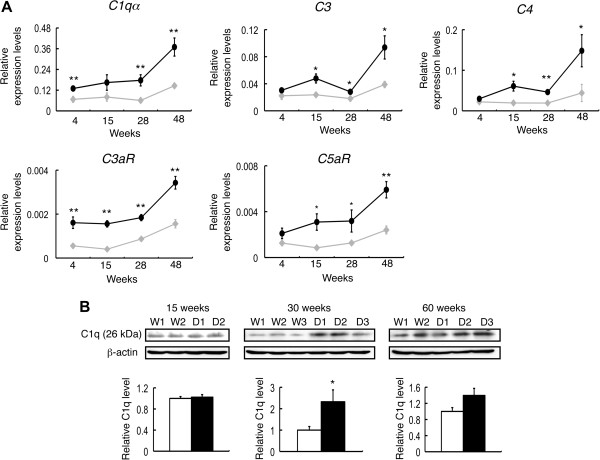Figure 4.
Complements were upregulated with aging in the spinal cord of double knockout (DKO) mice. (A) mRNAs from spinal cord of 4-, 15-, 28-, and 48-week-old wild-type (WT) and DKO mice were analyzed for the expression levels of complement genes with real-time reverse transcription-polymerase chain reaction (RT-PCR) and presented after correction by mouse GAPDH gene (gray diamond, WT; closed circle, DKO). The numbers of mice examined were as follows: 4-, 15-, 28-, and 48-week-old WT (n = 3) and DKO (n = 3); data are presented as mean ± standard deviation (SD), and analysis of data by two-way analysis of variance (ANOVA) was performed as described in Figure 1D. Interaction of mouse groups and time courses: C1qα, C3, and C4, P <0.01; C3aR and C5aR, P <0.05. The comparison among time courses in mice revealed that all genes in WT and DKO mice, except for C4 in WT mice, turned out to be statistically significant. Comparison of WT and DKO with same age is shown in figure (*P <0.05; **P <0.01) (B) Western immunoblotting of C1q in the spinal cord was performed by using total lysates from 15-, 30-, and 60-week-old WT and DKO mice. The intensity of the bands was corrected with that of β-actin and presented as mean ± SD. The numbers of mice examined were as follows: 15-week-old WT (n = 2), DKO (n = 2); 30-week-old WT (n = 3), DKO (n = 3); 60-week-old WT (n = 2), DKO (n = 3); data are presented as mean ± SD and were analyzed by Student t test (*P <0.05; **P <0.01).

